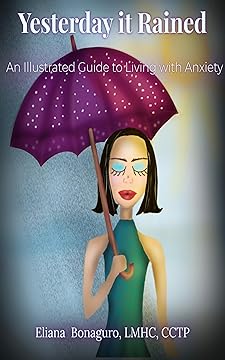Panic Attack Treatment in Florida
Find Calm, Confidence, and Control Again
If you’re searching for panic attack treatment Florida, you’re likely feeling overwhelmed, anxious, and desperate for relief. Panic attacks can hijack your day without warning — your heart races, your chest tightens, your mind spins. I offer compassionate, evidence-based therapy for panic disorder in Florida to help you break the cycle of fear and take back your sense of calm. Whether you’re dealing with daily anxiety or sudden episodes, you’re not alone — and you’re not stuck.
When Panic Takes Over, It Can Feel Like You’re Losing Yourself If you’ve ever had a panic attack, you know it’s not “just stress.” It’s a tidal wave—your heart races, your chest tightens, your hands tingle, and your mind screams, “Something is wrong.”
Even when you logically know you’re not in danger, your body reacts like it’s an emergency. You start avoiding places just in case. You dread the next one. You feel confused, exhausted, and alone.
You’re not broken. And you’re not alone. Panic attacks are overwhelming—but highly treatable.
What Is a Panic Attack?
Panic attacks are intense fear episodes that strike suddenly. Common symptoms include:
Racing heart or chest pressure
Shortness of breath
Feeling faint or dizzy
The urge to escape
A sense of doom or detachment
Though they typically last 10–20 minutes, the fear of them can linger—causing avoidance, agoraphobia, or constant hypervigilance.
This is the cycle I help my clients break—every day.

What Causes Panic Attacks?
- Genetic predisposition
- High chronic stress
- Sensitivity to physical sensations (interoceptive sensitivity)
- Suppressing emotions or always “holding it together”
- Catastrophic thinking (“If my heart’s racing, I’m dying”)
With the right support, you’ll learn to:
- Understand what’s happening in your brain and body
- Reframe anxious and catastrophic thoughts
- Gently face feared situations or sensations (exposure therapy)
- Build confidence and calm from the inside out
What Panic Attack Treatment Involves
My approach to panic attack treatment Florida is rooted in Cognitive Behavioral Therapy (CBT) and Exposure-Based strategies. Together, we’ll target the triggers behind your symptoms, retrain your response to fear, and build the emotional tools you need to feel grounded again. If you’ve tried deep breathing or distraction without success, this work goes deeper — addressing the root of your panic, not just the surface.
Why Choose Me for Panic Disorder Therapy?
Panic attacks are intense fear episodes that strike suddenly. Common symptoms include:
🧠 Advanced CBT Training I trained at the Beck Institute, where CBT was founded and refined.

📘 Author of Yesterday It Rained: An Illustrated Guide to Living with Anxiety This gentle, illustrated guide combines lived experience with research-based strategies.
🌐 Online Therapy Where You Are
Licensed in both Florida and New York, I provide telehealth for:
* Florida: Naples, Fort Myers, Orlando, Tampa, Miami, West Palm Beach
* New York: NYC, Brooklyn, Queens, Long Island, Albany, Syracuse
💬 Real Connection
Therapy with me is collaborative, nonjudgmental, and warm. Clients often say, “You really get it.”
What Causes Panic Attacks?
1. Understanding Your Story
We begin with how panic shows up in your life.
2. Education That Empowers
You’ll learn why panic happens—and why you’re not crazy. Just human.
3. Personalized Strategy
We’ll co-create a treatment plan using CBT, exposure, and mindfulness tools.
4. Gradual Exposure With Support
You won’t face fear alone. Together, we’ll retrain your nervous system.
5. Reclaiming Your Life
This is about more than managing symptoms. It’s about feeling like you again.
Imagine Life Without Panic Attacks
You go to the grocery store without scanning for exits
You drive, speak in public, travel, or go on dates
You trust your body again
Fear no longer runs your day
You stop avoiding life
Serving Clients Across Florida and New York
Florida:
Naples, Fort Myers, Tampa, Miami, Sarasota, Jacksonville, Orlando, West Palm Beach
New York:
New York City, Brooklyn, Queens, Long Island, Buffalo, Albany, Syracuse
You Don’t Have to Live in Fear
Panic doesn’t define your future. With the right help, you can feel calm, safe, and in control again.
Schedule your free 15-minute consultation.
Let’s find out if we’re a good fit—no pressure, just connection.

Check out my book:
Yesterday It Rained: A Visual Guide to Living with Anxiety
Available now on Amazon.
If you’re holding this book, chances are you—or someone you love—is struggling with persistent anxiety. You’re not alone.
As a licensed mental health counselor specializing in anxiety disorders, I’ve walked alongside countless individuals learning to manage the daily weight of worry, panic, and intrusive thoughts. This illustrated guide is more than just information—it’s a compassionate, practical companion designed to make evidence-based tools feel relatable and accessible.
Everything We Offer
Lorem ipsum dolor sit amet, consectetur adipiscing elit. Ut elit tellus, luctus nec ullamcorper mattis, pulvinar dapibus leo.
Lorem ipsum dolor sit amet, consectetur adipiscing elit. Ut elit tellus, luctus nec ullamcorper mattis, pulvinar dapibus leo.